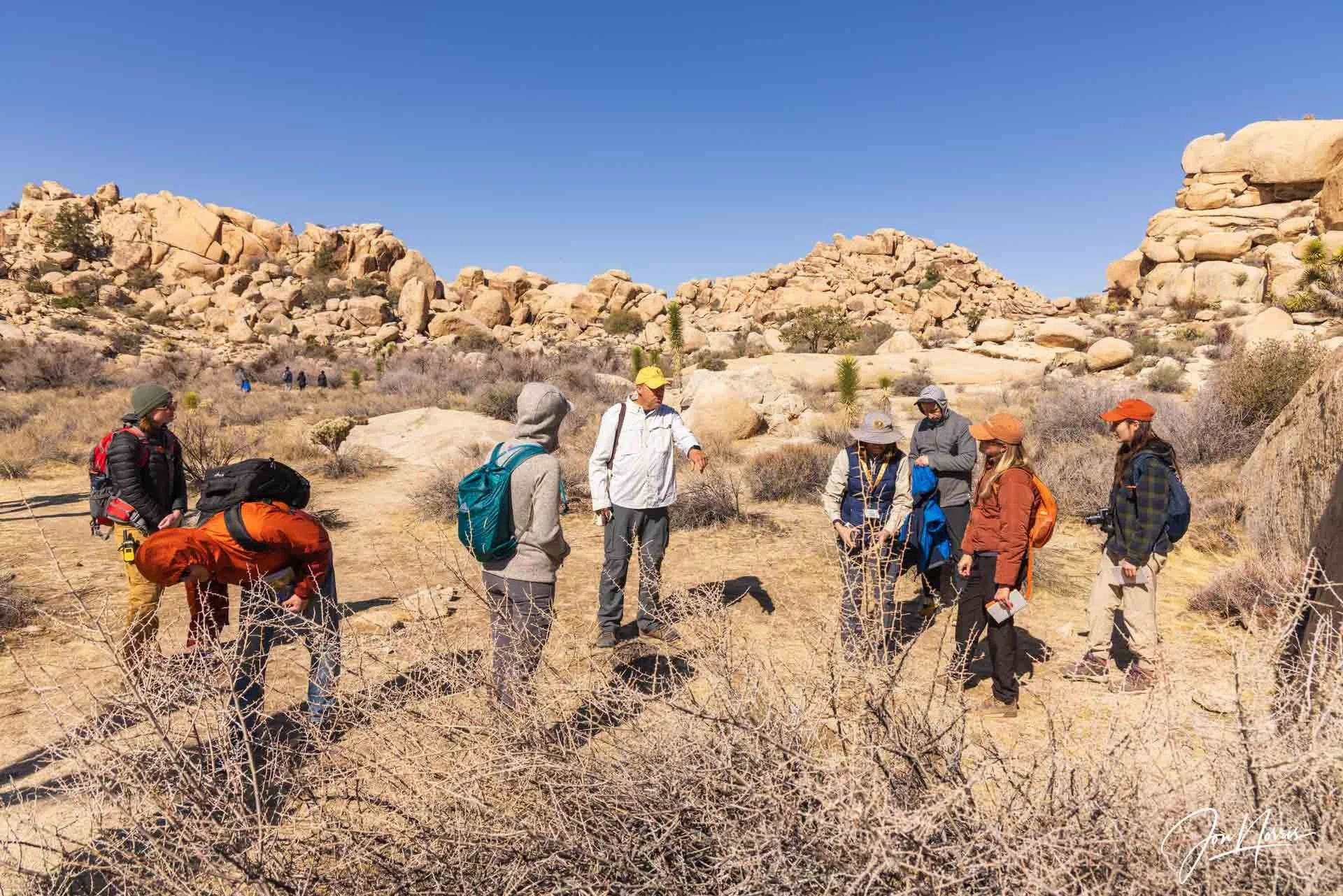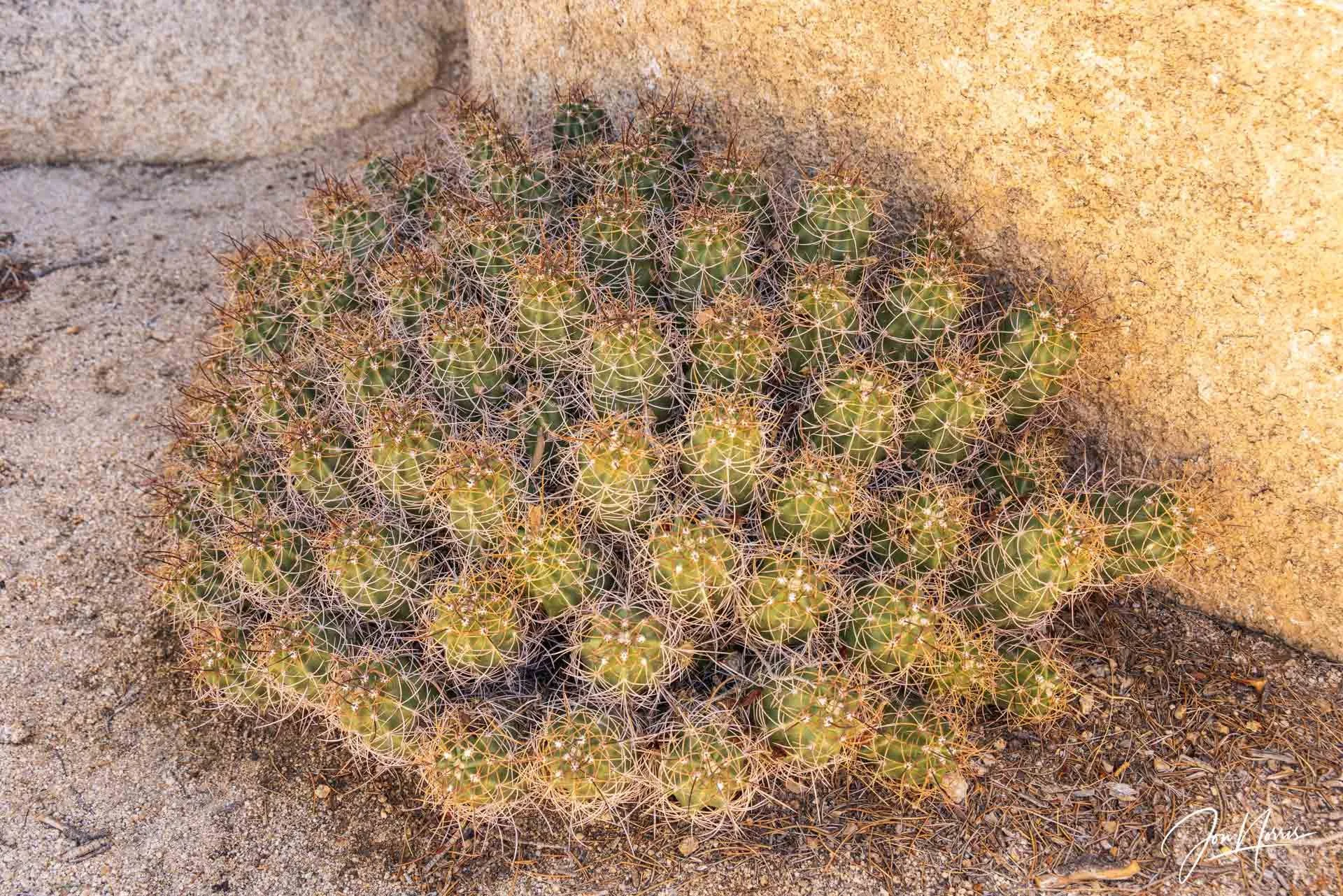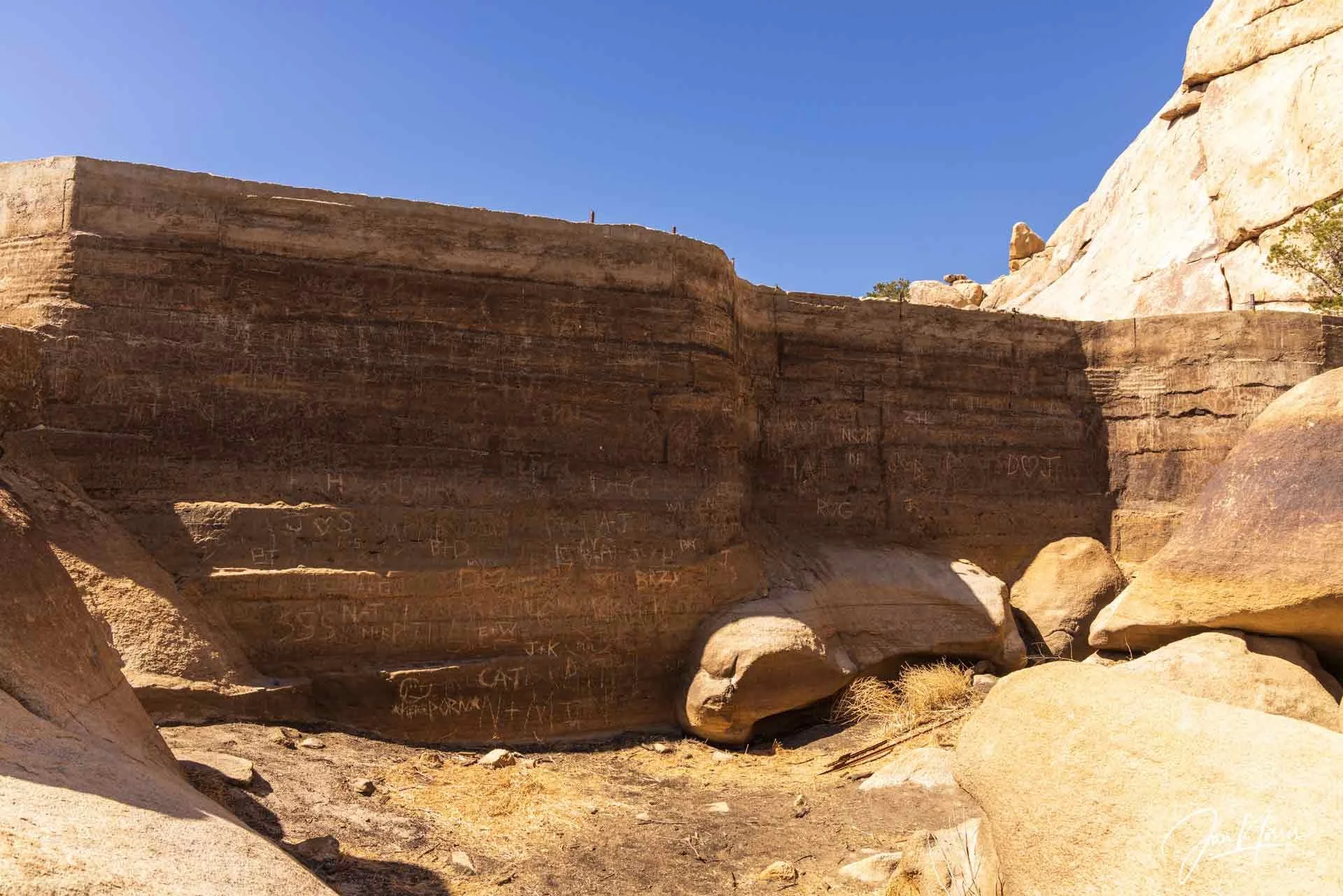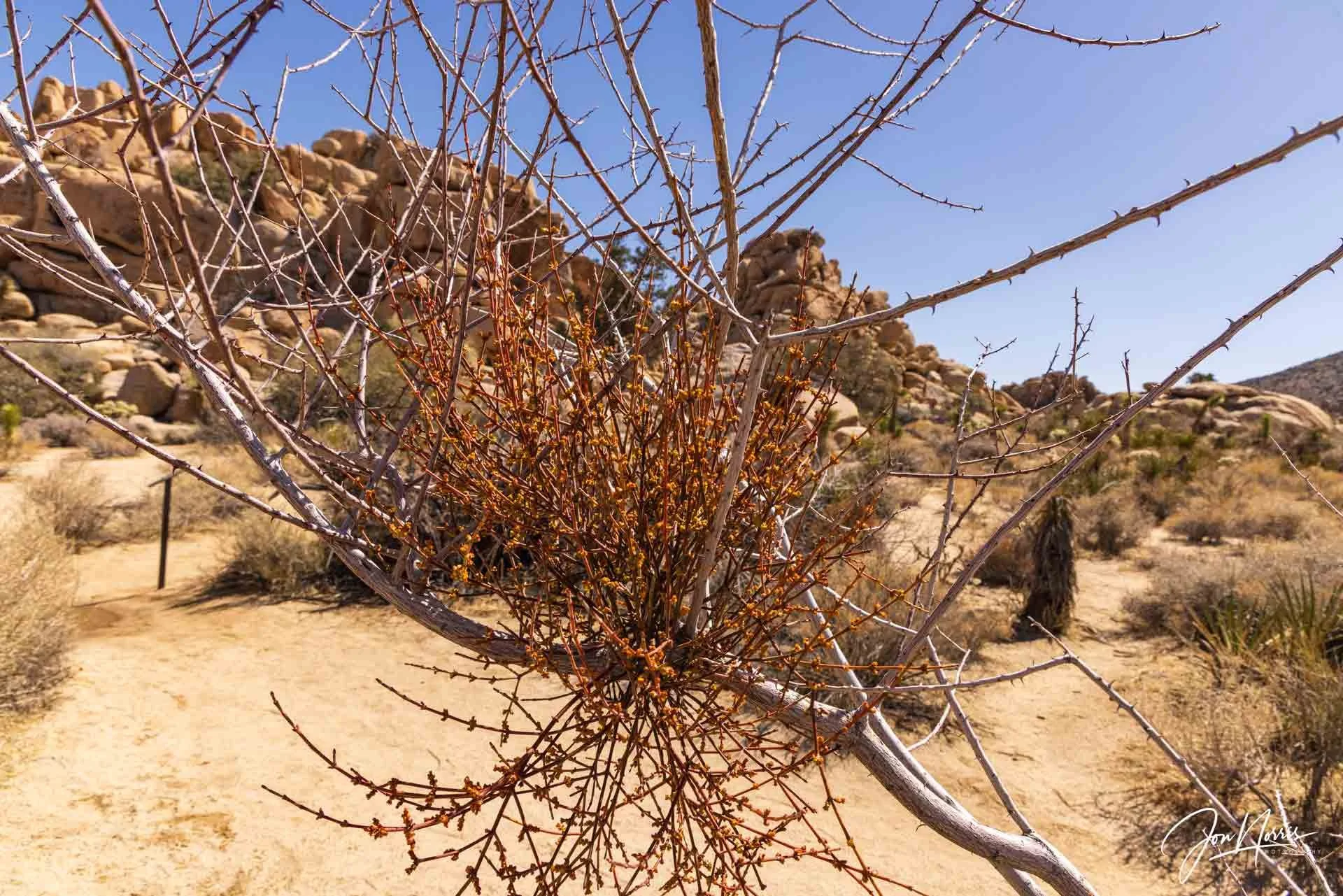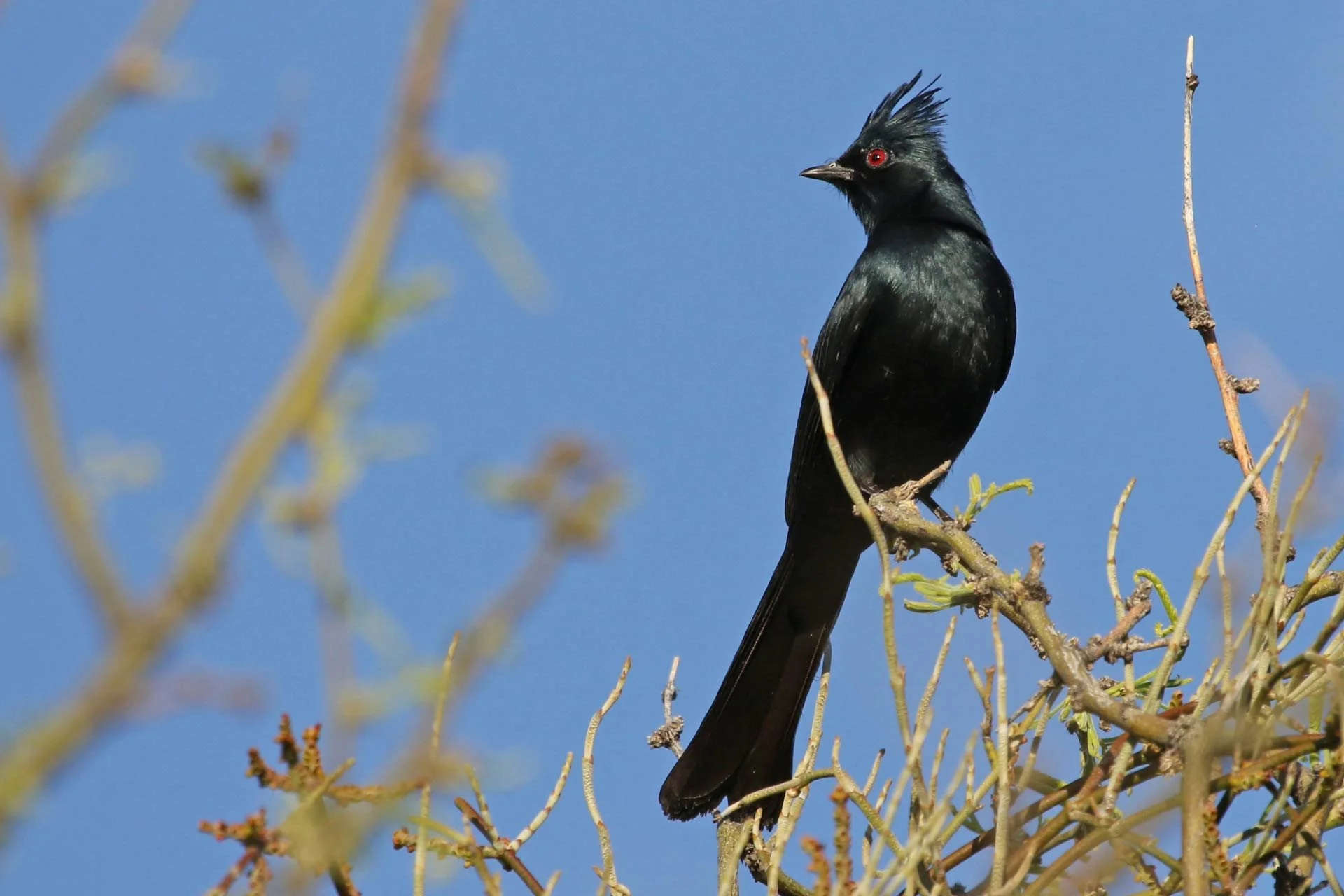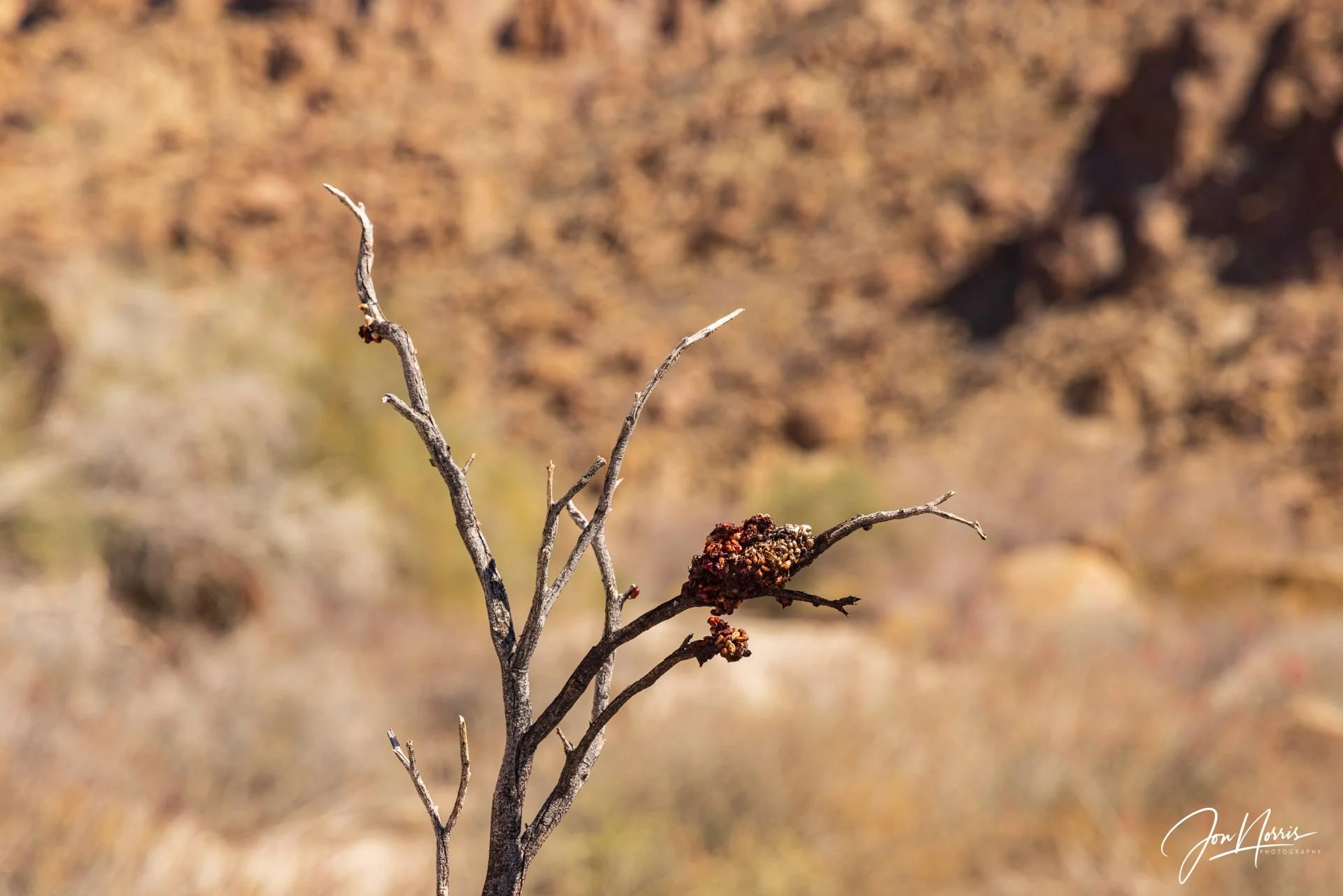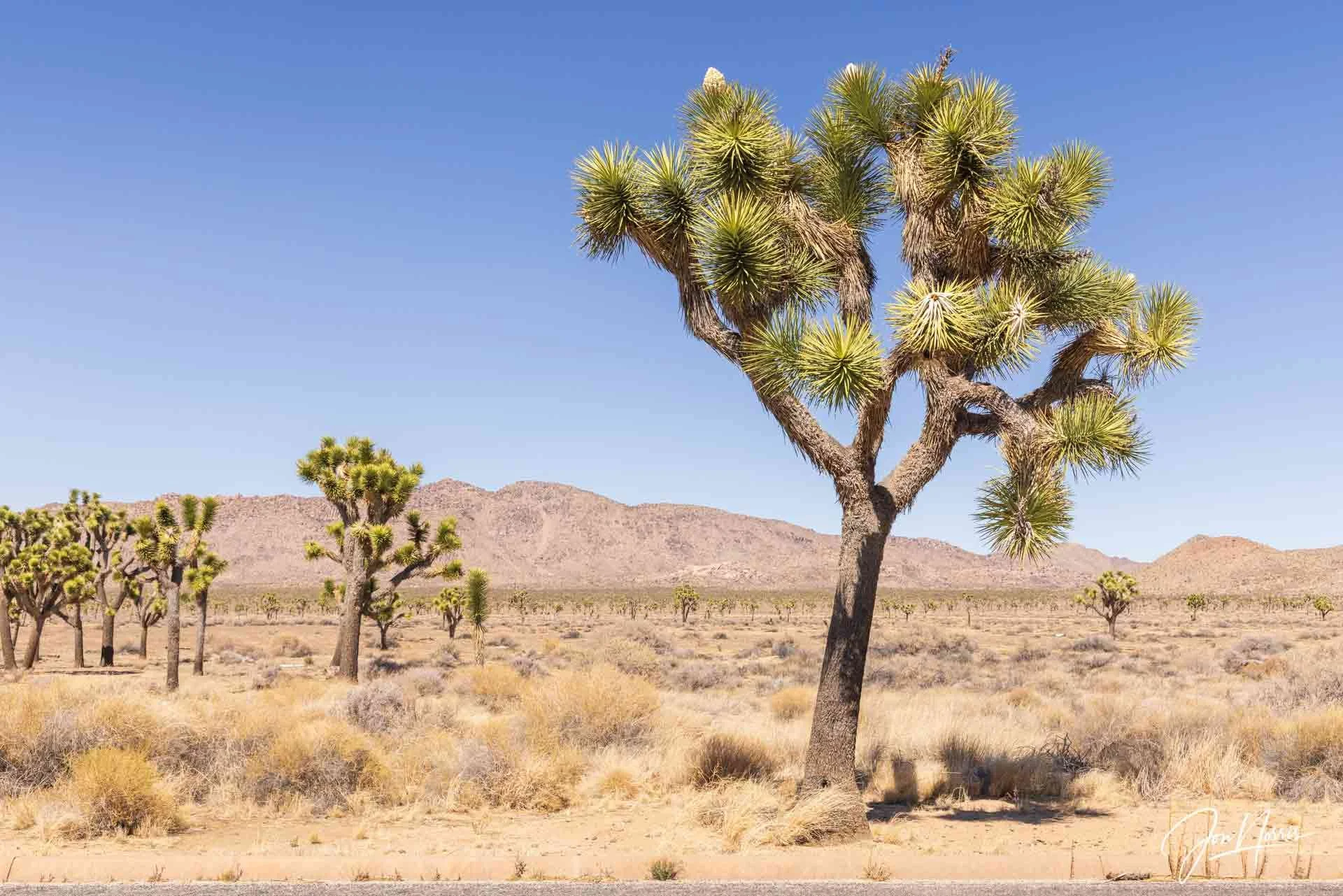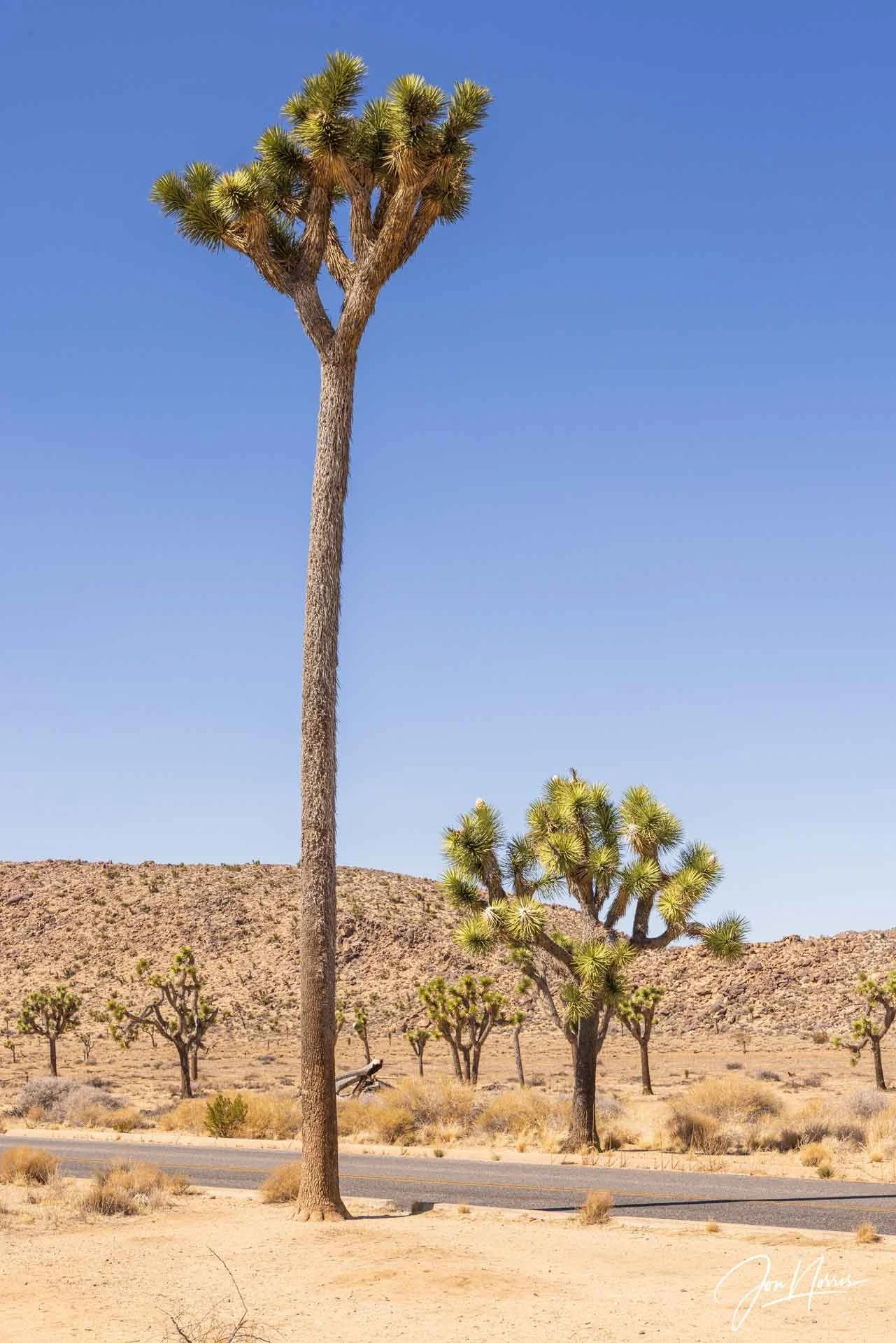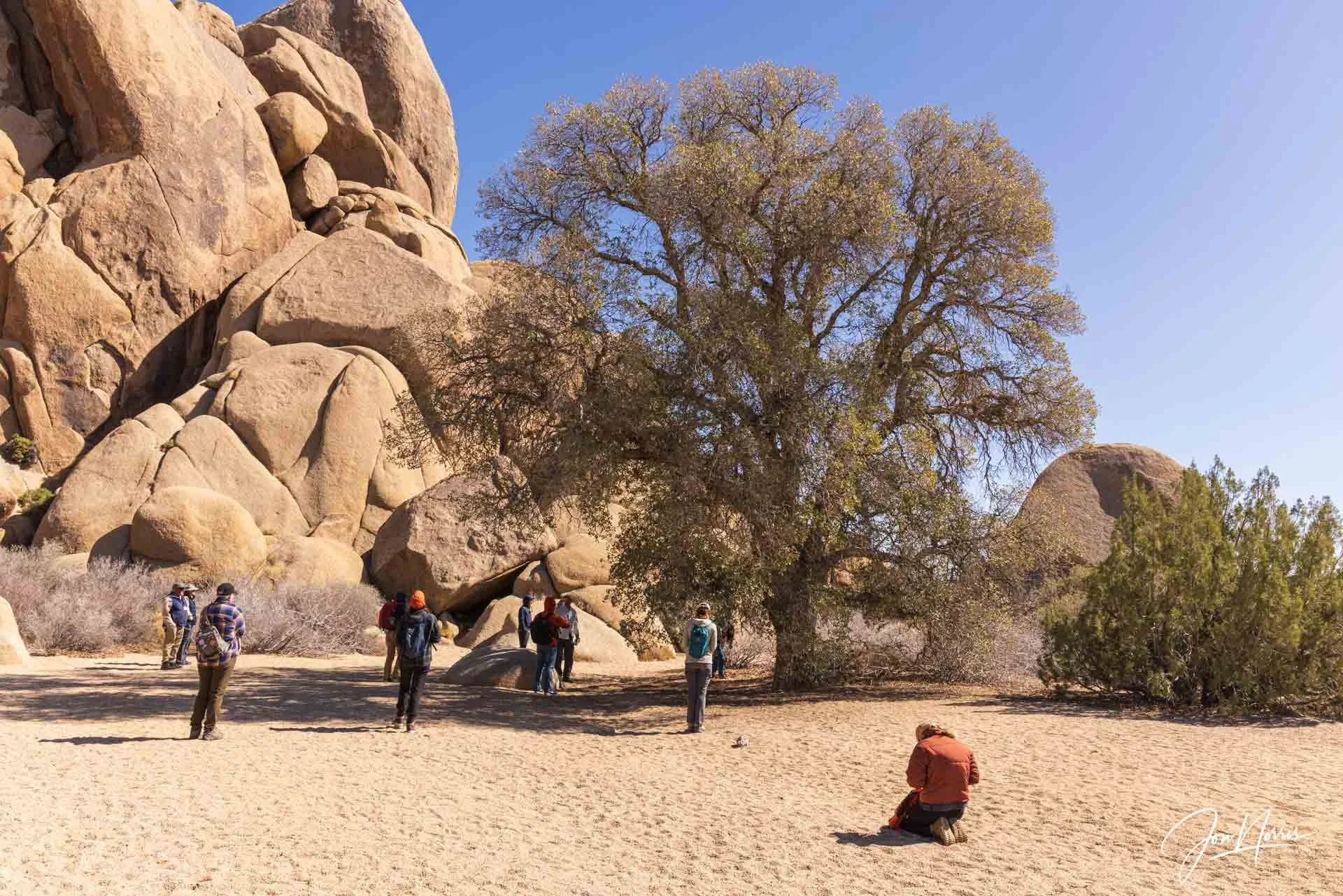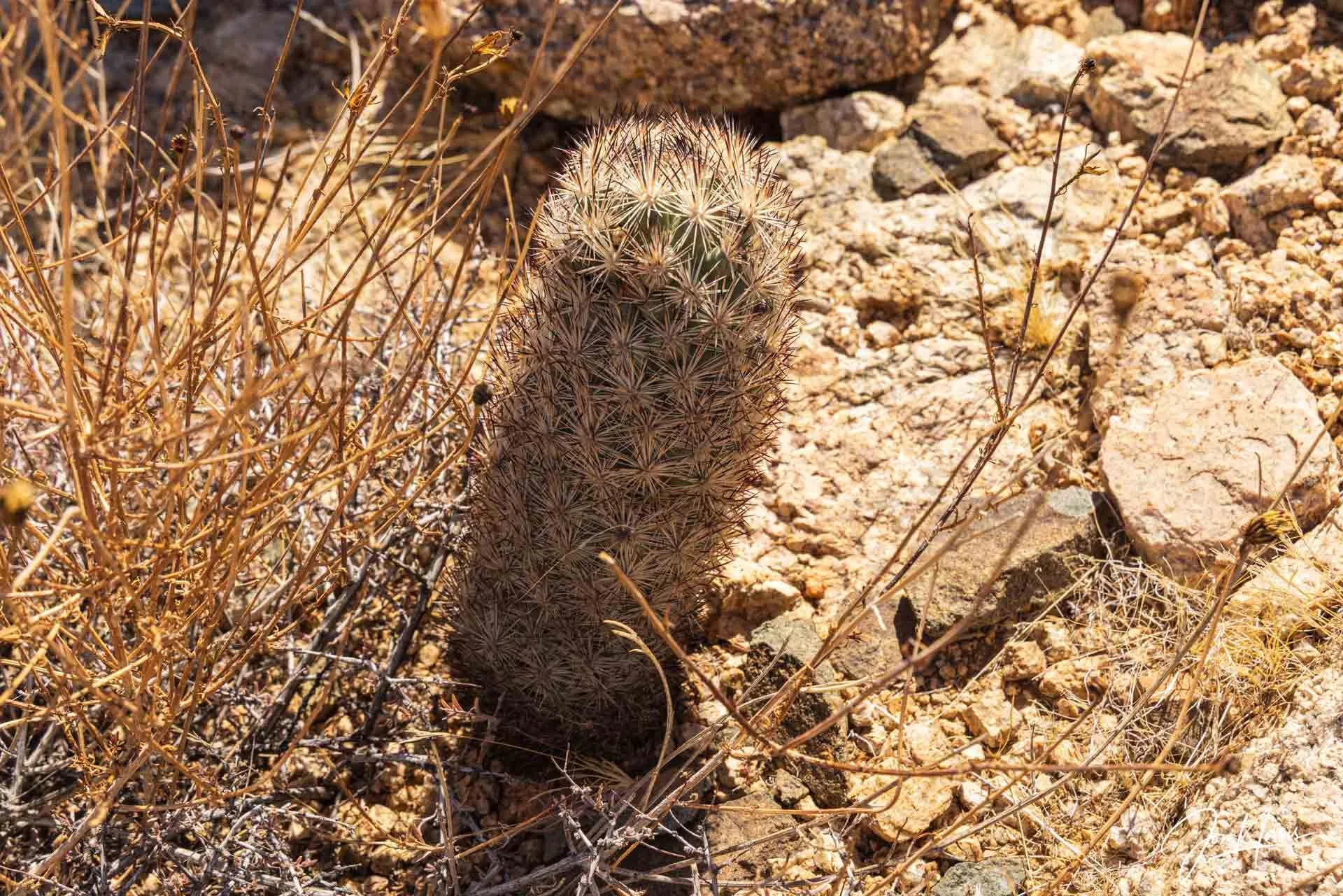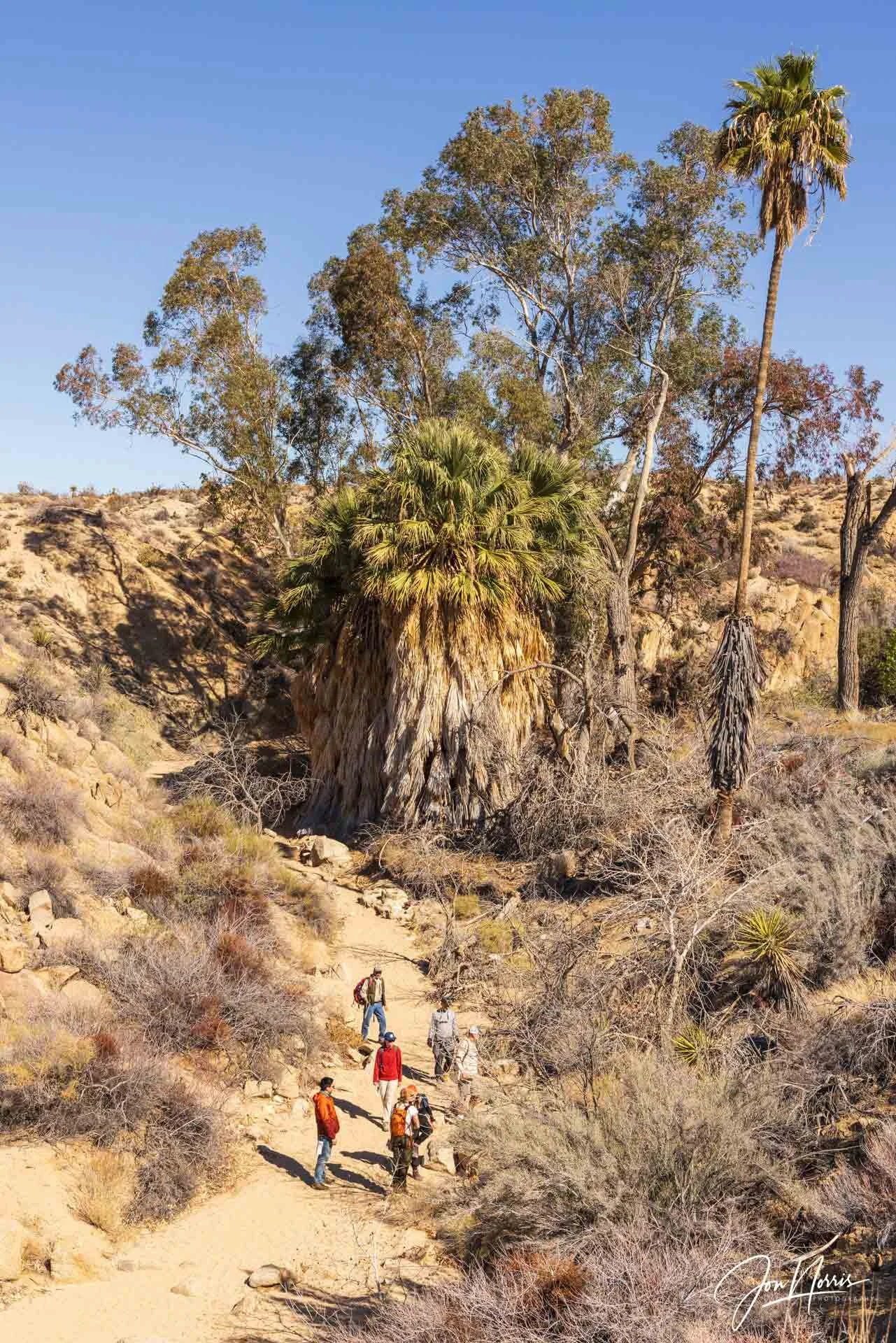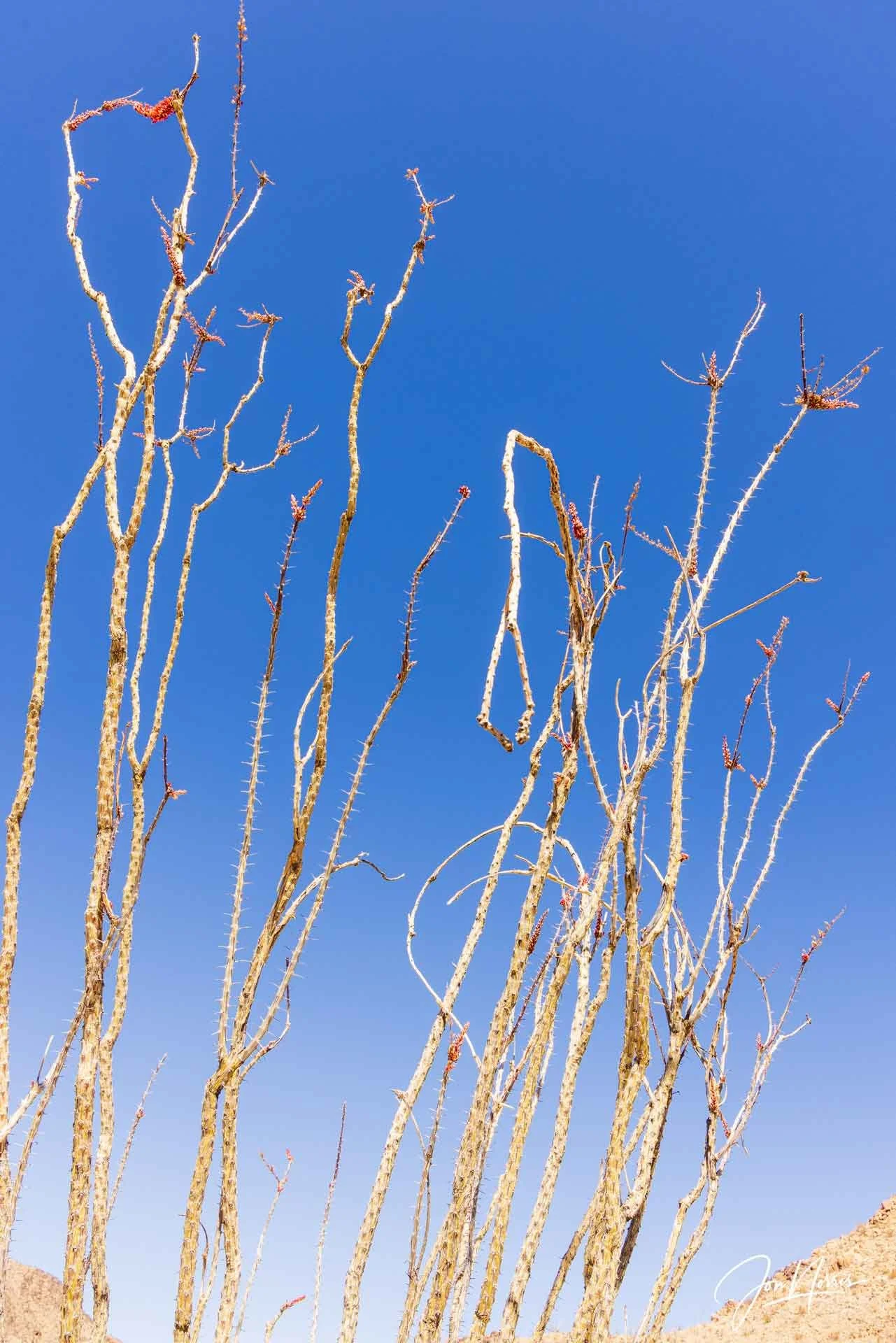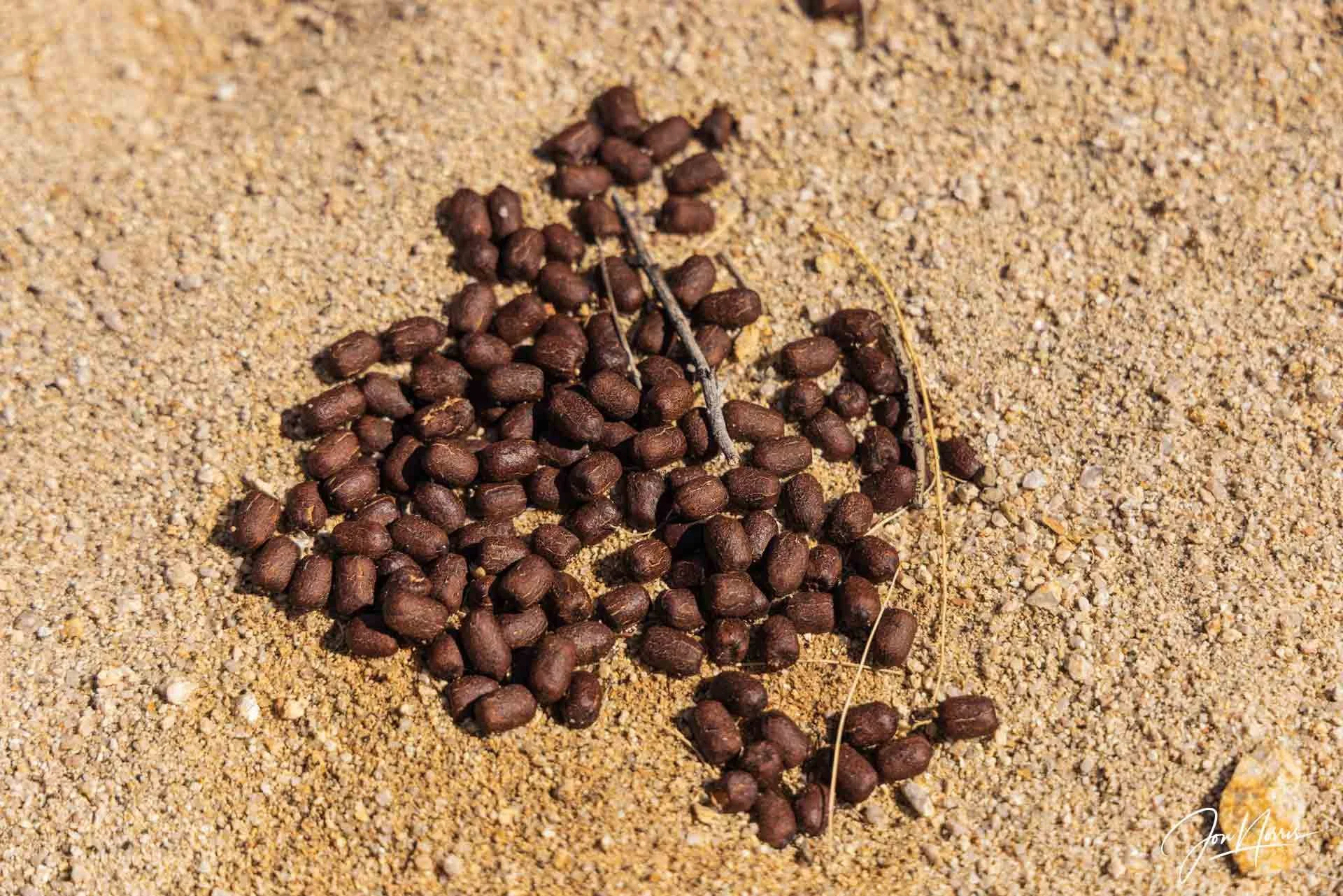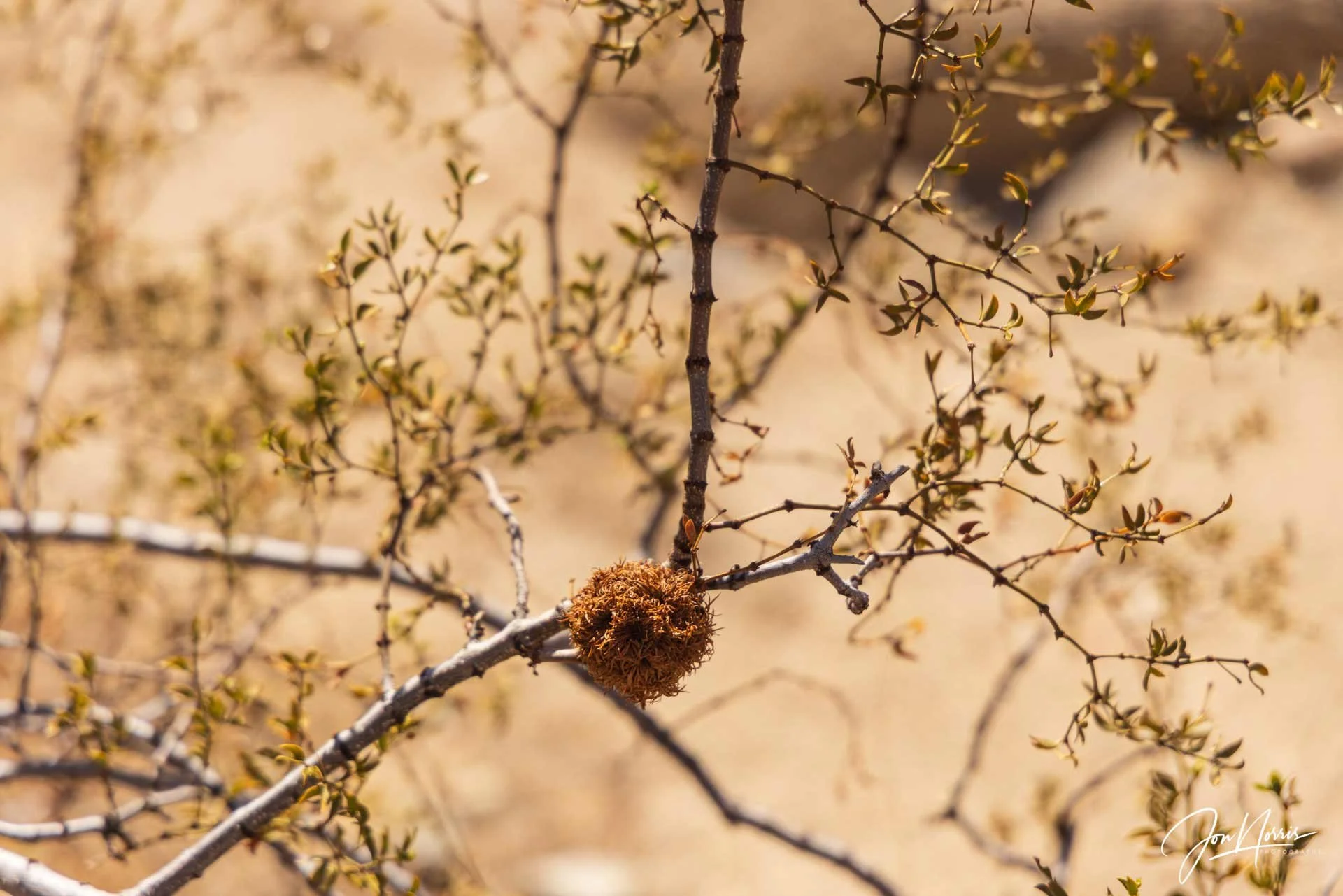Spring Flora of Joshua Tree National Park
Explore Landscapes #81
At the start or March I volunteered on a throughly enjoyable Spring Flora class in Joshua Tree National Park, despite there being almost no wildflowers in bloom.
Kurt Leuschner (our instructor in the yellow hat) helping the class identify flowering plants and shrubs | © 2025 Jon Norris
It should be wildflower season in Joshua Tree National Park at the moment, however, it’s been a fairly dry winter, so the flowers are not yet evident. Wildflower blooms vary from year to year, and to get a good wildflower bloom requires monthly rainfall, of at least 1 inch, from October through February.
Check out this NPS page on Wildflower Viewing in Joshua Tree National Park.
Despite the lack of wildflowers, I had the privilege of volunteering on a Spring Flora class organized by the Desert Institute at the Joshua Tree National Park Association.
Our instructor, Kurt Leuschner, M.S., Wildlife Ecology, is a Professor of Natural Resources at College of the Desert. Leuschner's specialties include: ornithology, entomology, and desert ecology. He has led hundreds of field trips both locally and as far afield as Africa. He teaches natural history courses for the Bureau of Land Management, UCR Extension, the Desert Institute, the Living Desert, California State Parks, Riverside County Parks, and many other conservation organizations.
For over 20 years, the Joshua Tree National Park Association’s Desert Institute has been offering hands-on, one-of-a-kind programs to help visitors of Joshua Tree National Park better understand the vast, complicated, and magical place that is the California Desert. They’ve got programs and classes for everyone!
Please take a look at their Spring 2025 Field Guide, and learn more about specific classes (and hopefully book a spot) via the Desert Institute Humanitix page.
Mojave Mound Cactus | © 2025 Jon Norris
During our day, thanks to Kurt’s excellent instruction and knowledge we were able to identify over 40 different plants and shrubs, via their leaves, structure, and coloring. As Kurt said, if we could identify these plants when they weren’t in flower, then we’d have no problem identifying them once in flower.
I added a lot of new plants onto my Seek app (by iNaturalist) and also ticked them off in my wildflower field guide.
Barker Dam completely dry | © 2025 Jon Norris
As evidence of how dry the winter has been in the Mojave Desert, the Barker Dam was completely dry and I was able to stand inside the dam. You can see where the high-water marks are on the dam wall and the adjacent rocks.
It was wonderful to take our time walking around the Barker Dam trail, and to identify each and every new plant or shrub that we came across. The one-mile loop took us over two hours to complete!
Desert Mistletoe growing on its host | © 2025 Jon Norris
A Phainopepla | Adobe Stock Image
In the southwest deserts, Phainopepla birds and desert mistletoe rely on each other to survive and flourish. Phainopepla males are a shiny black, with the females a charcoal gray. Both have red eyes and a feathery crest. They’re quite easy to spot in the desert as they like to perch high up at the top of mesquite trees.
A tetraskata (Greek for ‘pyramid of scat’) | © 2025 Jon Norris
The Phainopeplas feed on the berries of the parasitic desert mistletoe plant, and once the berries pass through the bird’s digestive tract, the seeds will stick to the branches of the host plant.
Phainopeplas are perching birds so will often pick a favored perch to eat and digest, leading to a tetraskata (a pyramid-shaped pile of bird droppings) forming beneath the perch.
A Joshua Tree starts to bloom | © 2025 Jon Norris
The Joshua Trees (Yucca brevifolia) are also slow to bloom this Spring, however, we did spot some trees starting to flower.
The ‘Barber Pole’ dwarfs a neighboring Joshua Tree | © 2025 Jon Norris
The tallest Joshua Tree in the park is named ‘The Barber Pole’ and is approximately 45 feet tall, and is estimated to be about 950 years old.
The class stopping to appreciate this magnificent Live Oak, ‘The Old Oak’ | © 2025 Jon Norris
During the course of the class we explored a number of different areas within the park, both in the high desert (the Mojave desert) and in the low desert (the Sonoran/Colorado desert).
One location that I always enjoy visiting is the Live Oak picnic area. Apart from the namesake magnificent Live Oak, there are so many other plants and shrubs to discover, like the Fishhook cactus (below).
Fishhook Cactus | © 2025 Jon Norris
On the Sunday morning we started our day by exploring the area close to the Cottonwood Visitor Center and Oasis.
California Fan Palms and Eucalyptus Trees neat Cottonwood Oasis | © 2025 Jon Norris
If you’re looking for water in the desert, the presence of California Fan Palms indicates water seeps, springs and streams. These palm oases occur along linear earthquake fault zones (the park being very close to the San Andreas fault running along the Coachella Valley). The fault lines act like an underground dam, interrupting subterranean water flow and pushing it to the surface.
Ocotillo in early stage of flowering | © 2025 Jon Norris
One of the only plant types that we came across during the class that had started to flower were the Ocotillo. The bright red/orange tubular flowers were beginning to form at the tips of the stems, and you could see the bright green growth in the stems was about to show.
This is the closest we got to Bighorn Sheep during the class | © 2025 Jon Norris
Sorry, I’m bringing the topic of conversation back to poop again. You don’t often see Bighorn sheep in Joshua Tree as they like to stay well clear of humans, and spend much of their time way out in the wilderness. We must have got close to a herd as we were exploring one of the canyons, as we found fresh pellets. But no signs of the Bighorn sheep.
Creosote Bush Gall | © 2025 Jon Norris
Finally, a subject that I found fascinating, and had no knowledge of prior to the class was galls.
Creosote gall midges are a species of gall-inducing flies which inhabit creosote bushes. The female inserts her egg into the creosote bush along with a fungal spore, that forms the gall. When the egg hatches the developing larva feeds upon the fungus, until the adult emerges after a period of rain fall.
Nature never ceases to amaze me and there’s just so much to experience and learn about.
I highly encourage anyone visiting Joshua Tree National Park to sign up for the JTNPA newsletter (via their homepage), check out the Spring 2025 Field Guide, and learn more about specific classes via the Desert Institute Humanitix page.

